
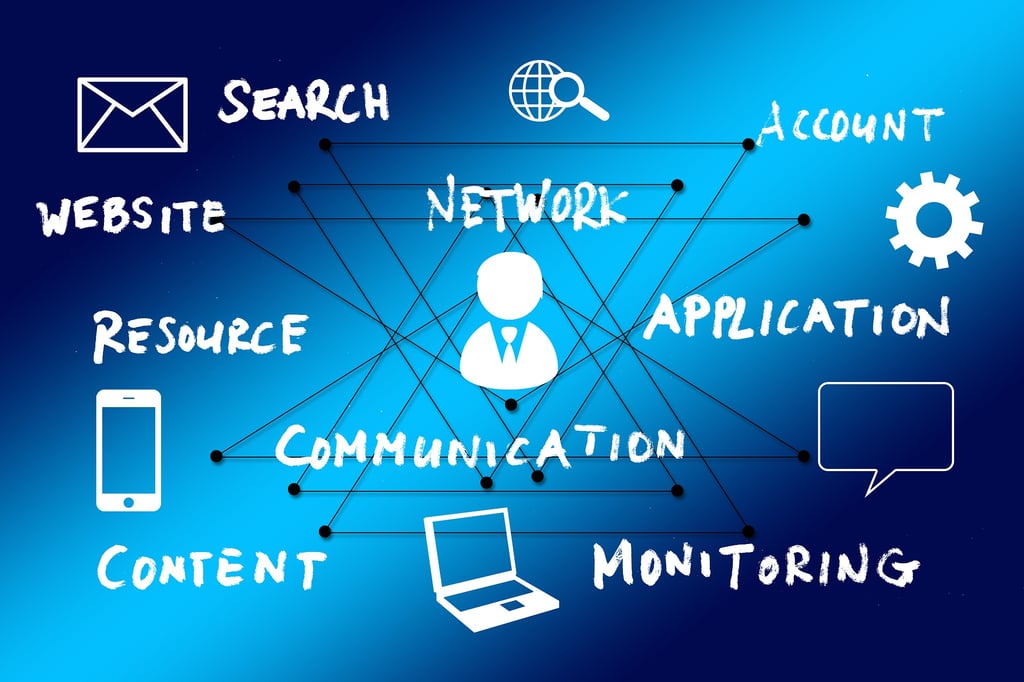
Top Network Diagram Software & Tools 2021 | ENP
Enterprise networks are constantly expanding, and especially in the age of cloud computing, edge computing, and 5G, the capabilities and types of network components are quickly diversifying. It’s difficult to navigate a large network, whether you’re looking to troubleshoot a performance issue, find the site of a security breach, or audit the general makeup of […]


Enterprise networks are constantly expanding, and especially in the age of cloud computing, edge computing, and 5G, the capabilities and types of network components are quickly diversifying. It’s difficult to navigate a large network, whether you’re looking to troubleshoot a performance issue, find the site of a security breach, or audit the general makeup of your users and devices. With a network diagram, especially one that automatically updates through network diagram software, users of varying backgrounds can easily visualize the most important features and connections on the network. Read on to learn more about some of the top network diagram software and tools that can help you develop a better understanding of your enterprise network.
Read more: 5G Cybersecurity Risks and How to Mitigate Them
A network diagram is a visual representation of all of the connections on a network. With a comprehensive network visualization, viewers can see how devices, connections, pathways, and data flows are currently set up on their network.
Some of the main approaches to network diagramming include:
This type of network diagram may be useful for larger networks because you can manually draw network components and connections at a granular level. However, your diagram will need to be audited and updated frequently as your network changes over time.
The semi-automatic approach to network diagramming automates the process of auto-discovery, or automatically identifies new devices as they join the network. However, users are still tasked with manually making the diagram connections.
This approach automates the device discovery phase and auto-generates a network diagram to match the changing network in real time. This type of diagram solution typically offers templates, stencils, and other features, though it lacks some of the customizability in manual and semi-automated diagram tools.
Logical network diagrams are focused less on the physical hardware and applications on a network and more on how and why everything connects the way it does. A logical network diagram typically includes information about subnets, routing protocols, and hardware like firewalls and routers that show how data flows from place to place.
A physical network diagram is more like a blueprint. It focuses on showing the physical layout of hardware and how every cable, router, and device physically connects.
Also Read: Best Network Monitoring Tools & Software
More on network data tools: Best Data Analytics Tools & Software

SolarWinds Network Topology Mapper is an automated network mapping and diagramming solution that allows you to schedule automated network scans for diagram updates at your preferred times. NTM is a great solution for users who want the ease of use that an automated solution provides, but still want a tool that is friendly to larger network setups. With its focus on developing multiple maps, multi-layer discovery, and regulatory compliance, this SolarWinds solution makes it possible for network administrators to update and troubleshoot their network with just a few clicks to automate the process.
Key Features:
Top Pro: Network Topology Mapper offers a wide variety of real-time alerts to users, especially when used in partnership with Network Configuration Manager and Netflow Traffic Analyzer.
Top Con: Some users say that the user interface is not very intuitive, especially when working with the SolarWinds API.
Pricing: $1,570, with a 14-day free trial available.
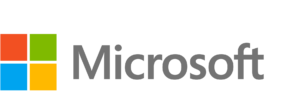
Microsoft Visio is one of the oldest, most popular network and business diagramming tools on the market. The user interface is particularly friendly to the large number of enterprise users who are familiar with Microsoft Office tools and collaboration features. As a bonus, most other network diagramming tools on the market make compatibility a point with Visio imports and exports. So whether you’re considering a move toward or away from Microsoft Visio, you can expect to have an easier time moving existing network visual data as needed.
Key Features:
Top Pro: Visio offers several accessibility features to its customers, including Narrator, Accessibility Checker, and high-contrast support.
Top Con: Shapes and icons included in Visio are difficult to arrange and offer limited options to users.
Pricing: Visio Plan 1: $5.00 per user per month; Visio Plan 2: $15.00 per user per month. Recently, Microsoft has rolled out a lightweight web app version of Visio to all Microsoft 365 commercial subscribers.
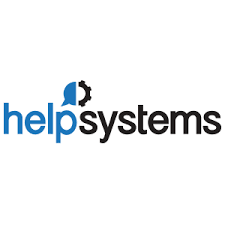
HelpSystems Intermapper offers a semi-automated approach to network diagramming, with automated topology mapping and discovery, but also the ability to draw network connections manually. Although the user interface looks more dated than some of its competitors, Intermapper offers a deep visuals library with live color-coding and animation features. This tool also provides some of the strongest virtualization and network monitoring capabilities in the networking diagramming market.
Key Features:
Top Pro: Intermapper offers live color-coding and animation that is especially helpful for real-time data visualization and troubleshooting.
Top Con: Some users think the graphics are difficult to view, especially on mobile or when printed out.
Pricing: Quote available from HelpSystems team upon request. A 30-day free trial is available.

SmartDraw is a lesser-known tool in the diagramming market that provides strong user accessibility, especially for smaller companies getting started with network diagrams. Their focus on user-friendliness limits some of their customizable features, but the graphics are clean and easy to navigate, and the automations are designed to work for less technical users. Another draw for the smaller team that wants to cooperatively manage a network is SmartDraw’s emphasis on collaborative integrations with Microsoft, Google, Jira, and AWS.
Key Features:
Top Pro: SmartDraw’s intelligent formatting engine helps users to build, edit, move, and otherwise adjust diagrams to their preferences.
Top Con: Some users have commented that the autosave feature is not always reliable.
Pricing: Team: $5.95 per user per month; Site: $2,995, billed annually. A free version is also available.
Lucidchart is a network diagramming tool that users often choose for their visually appealing and extensive template and shape library. This product can also be an especially useful diagramming tool for network security audits, due to its security view option. This diagramming solution offers a lot of flexibility to users who want to visualize network components through diverse layouts and strong collaboration features. However, it’s important to note that Lucidchart is very limited on automated features, like auto-discovery and live device management.
Key Features:
Top Pro: Lucidchart offers some of the most intuitive interfaces and user-friendly icons on the market.
Top Con: Shape, object, and general template management are tricky for some users.
Pricing: Team: Starting at $9 per user; Enterprise: Quote available from Lucidchart team upon request.
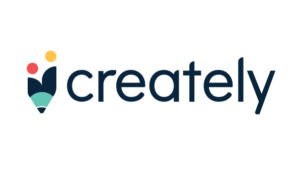
Creately is a network diagramming solution that users can access through their downloadable software or their cloud version. This tool is a strong charting tool for larger networks that want to visualize either wide area network (WAN) features or local area network (LAN) features at a detailed level. Much like Lucidchart, Creately is strictly a charting tool and does not offer automated device discovery and management features to its users.
Key Features:
Top Pro: Creately includes several real-time collaboration tools, both natively and through integrations.
Top Con: Trial workspaces are public, limiting the amount of security and flexibility for critical info in this space. Icons are also a bit outdated.
Pricing: Free version available. Team: Usually $6 per month per user, but currently running a discounted price; Enterprise: Custom pricing available.

ConceptDraw Diagram, perhaps better known by its previous name, ConceptDraw PRO, is a top business diagramming software solution with thousands of features in its visual library. In this tool, visually appealing icons combine with a user-friendly user interface that resembles familiar Microsoft Office layouts. ConceptDraw Diagram is frequently used as a part of the larger ConceptDraw Office suite, which offers additional strategic planning, team management, and project management solutions to teams. Like other charting tools on this list, ConceptDraw Diagram offers only limited automated features.
Key Features:
Top Pro: ConceptDraw Diagram is considered user-friendly, with extensive examples, documentation, and strong technical support.
Top Con: Rescaling, layers, and layouts are not always intuitive, especially when adjusted after the start of a project.
Pricing: Licenses come in packages of 1, 5, or 10. 1 License: $199; 5 Licenses: $920.50; 10 Licenses: $1,692.
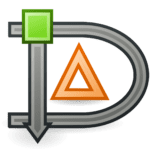
Dia is a free, open-source diagramming tool that is based on GTK+ and is modeled to look like a more “casual” Microsoft Visio layout. Like other open-source software projects, Dia offers strong documentation and a user community that can help new Dia users configure and manage their diagramming plans. This tool offers several customizable features because of its open-source format, and unlike many other open-source projects, Dia was designed to have a low learning curve and a simple interface that non-developers can use with a bit of guidance.
Key Features:
Top Pro: Extensive documentation and customizability are available due to the open-source format.
Top Con: The user interface is dated and the object library is not always updated to reflect current use cases.
Pricing: Free and open-source tool for network diagramming, available for download online.
Network diagrams, especially when regularly updated through diagramming solutions, offer several benefits to the enterprise network:
Whether a new company is building a network or an existing company is looking to revamp its network design, network diagramming solutions can help architects to visualize their new network infrastructure before committing to the design. Network diagrams, whether logical or physical, can help network architects to visualize network issues and to optimize their plans proactively.
Especially as networks grow to meet enterprise needs, it becomes increasingly difficult to manually review and update outdated network components. With a network diagram, your team now has a frequently updated visual representation of how the network is currently set up and where different outdated components live. Network auditing projects frequently rely on network diagramming software because of the detailed, accessible visual data they provide.
Unless you’re a network expert or a data scientist, most network data documentation and explanations are too complex to fully understand. Network diagrams make network data visual, thus making it possible for less technical administrators and executives to understand the network’s core components.
Most network diagramming software allows you to customize your diagram and dashboard to the exact network features you want to view. You may also have the option to create more than one map if you have several different layers or types of network connections that you want to visualize. Larger networks can be especially difficult to visualize, but with the single dashboard and customizable features in a network diagram, users can see the most relevant parts of a larger network at once.
Read Next: Best Data Visualization Tools & Software


Shelby Hiter is a writer with more than five years of experience in writing and editing, focusing on healthcare, technology, data, enterprise IT, and technology marketing. She currently writes for four different digital publications in the technology industry: Datamation, Enterprise Networking Planet, CIO Insight, and Webopedia. When she’s not writing, Shelby loves finding group trivia events with friends, cross stitching decorations for her home, reading too many novels, and turning her puppy into a social media influencer.

Enterprise Networking Planet aims to educate and assist IT administrators in building strong network infrastructures for their enterprise companies. Enterprise Networking Planet contributors write about relevant and useful topics on the cutting edge of enterprise networking based on years of personal experience in the field.
Property of TechnologyAdvice. © 2025 TechnologyAdvice. All Rights Reserved
Advertiser Disclosure: Some of the products that appear on this site are from companies from which TechnologyAdvice receives compensation. This compensation may impact how and where products appear on this site including, for example, the order in which they appear. TechnologyAdvice does not include all companies or all types of products available in the marketplace.